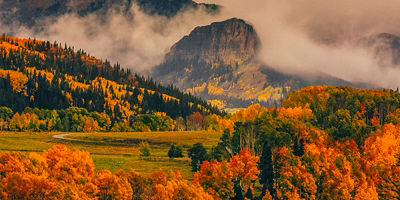
The Bureau of Land Management administers more acres of land––both above and below the surface––than any other government agency. Some 10.5% of the nation’s land is under the purview of the BLM, which includes 248 million acres of public lands and 700 million sub-surface acres (that’s one-third of the country’s mineral resources).
Not only does the BLM manage the biggest share of land, it has the broadest mission. Unlike, say, the National Park Service, which is intended to “preserve unimpaired” natural and cultural resources for the enjoyment of the people, the BLM is tasked with a multiple use mandate. This means the agency must balance renewable energy development with oil and gas extraction, and livestock grazing, timber harvesting, and mining with outdoor recreation like hunting, hiking, camping, and off-highway vehicle driving. But that doesn’t mean that every single acre of land must allow for these multiple uses. What it means is that the agency has to figure out how best to reach a balance that will meet the needs of the people for generations to come, and to “sustain the health, diversity, and productivity of public lands.”
Keep in mind that “the people”––ranchers, miners, environmentalists, outdoor enthusiasts––typically have vastly different interests and goals when it comes to land use. And the public does get a say: the BLM allows for public comment where citizens can voice their opinions in regard to rules and decision making on public land.
The result of factoring in a broad mission, public input, profit-seeking companies, and politicians? The BLM has a tricky and complicated mission to carry out.
What the BLM Manages
From the shimmering Bonneville Salt Flats outside of Salt Lake City to the Class IV rapids on the Arkansas River in Colorado to the site for Burning Man in the Black Rock Desert, America’s BLM lands vary wildly.
The vast majority of BLM land is primarily concentrated across 12 western states (Alaska, Washington, Oregon, California, Idaho, Montana, Wyoming, Utah, New Mexico, Colorado, Nevada, and Arizona). Over 99% of BLM land is free to use and the rules are far fewer than in national parks. Camping, biking, hiking, hunting, pets, and off-road driving (on designated routes) are allowed in many places.
The BLM also helps manage 260 designated wilderness areas and 491 wilderness study areas; these spots have the highest level of federal protection, so development and mechanical vehicles are not allowed. In addition, the BLM manages 28 of the country’s 122 national monuments, 2,400 miles of Wild and Scenic Rivers, and some 6,000 miles of National Scenic and Historic Trails. Collectively, these areas are known as National Conservation Lands, and comprise some 33 million acres.






















